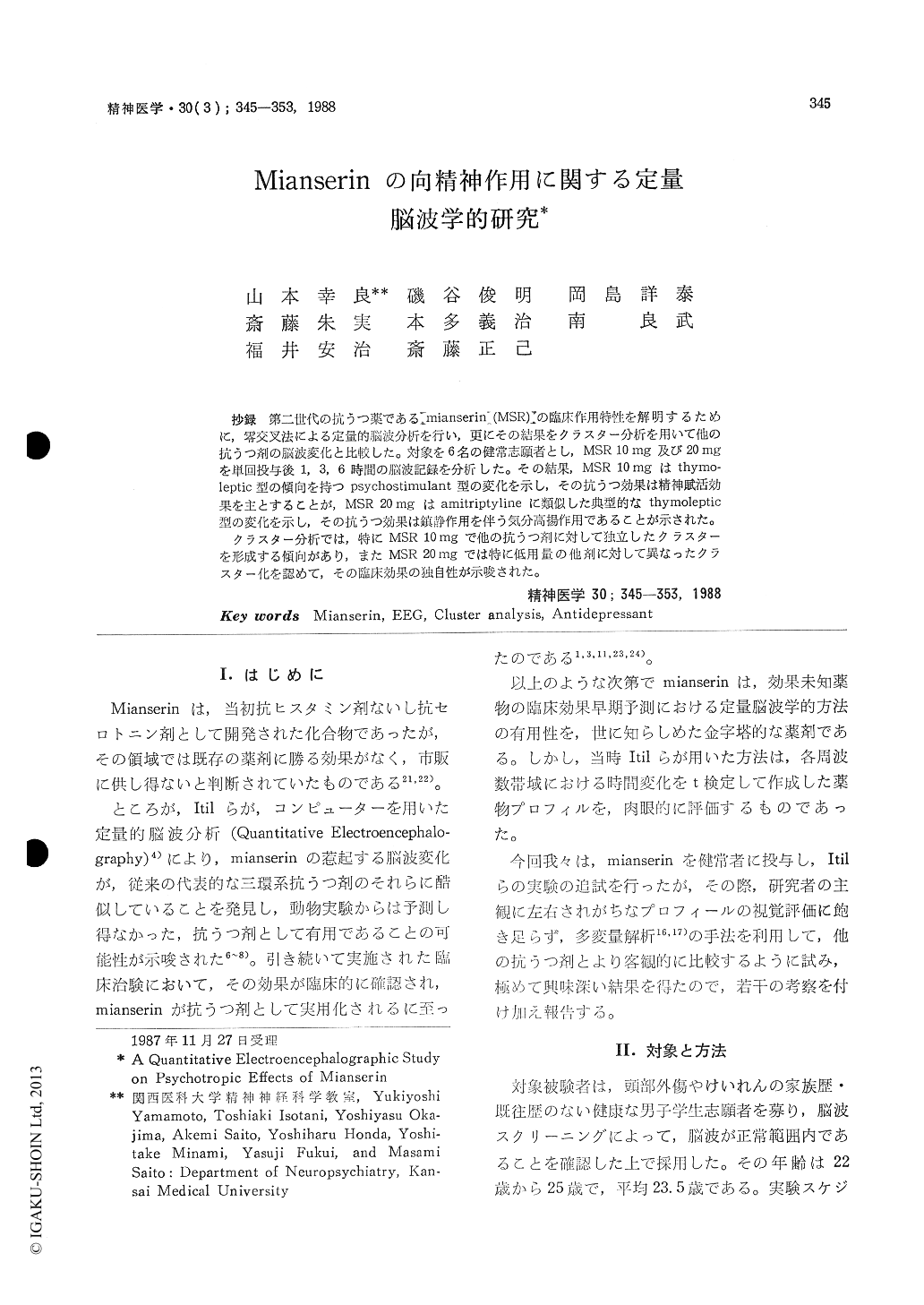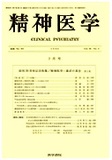Japanese
English
- 有料閲覧
- Abstract 文献概要
- 1ページ目 Look Inside
抄録 第二世代の抗うつ薬であるmianserin(MSR)の臨床作用特性を解明するために,零交叉法による定量的脳波分析を行い,更にその結果をクラスター分析を用いて他の抗うつ剤の脳波変化と比較した。対象を6名の健常志願者とし,MSR 10mg及び20mgを単回投与後1,3,6時間の脳波記録を分析した。その結果,MSR 10mgはthymoleptic型の傾向を持つpsychostimulant型の変化を示し,その抗うつ効果は精神賦活効果を主とすることが,MSR 20mgはamitriptylineに類似した典型的なthymoleptic型の変化を示し,その抗うつ効果は鎮静作用を伴う気分高揚作用であることが示された。
クラスター分析では,特にMSR 10mgで他の抗うつ剤に対して独立したクラスターを形成する傾向があり,またMSR 20mgでは特に低用量の他剤に対して異なったクラスター化を認めて,その臨床効果の独自性が示唆された。
For the purpose of studying clinical effects of mianserin, an antidepressant of the second generation, the authors carried out a quantitative EEG study. Six healthy male volunteers were orally given a single dose of mianserin 10mg and 20mg in crossover design and EEGs at 1, 3, and 6 hours after the administration were analyzed with zerocross periodgram method, and the induced EEG changes were compared with those due to other antidepressants in our database using cluster analysis.
The obtained results were as follows: EEG changes induced by 10mg of mianserin was of psychostimulant-type with some traits of thymoleptic-type, which indicates its clinical effects are mainly on psychoactivating. While 20mg of mianserin induced typical thymoleptic-type EEG changes similar to 25mg of amitriptyline indicating that it has clinically a mood-elevating action with a certain anti-anxiety effets.
In cluster analysis both the two doses of mianserin, especially 10mg of them, showed a difference from the other antidepressants and in particular 20mg of them was clustered separately from low dosage of other antidepressants. The results suggest that mianserin possesses unique antidepressant effects.

Copyright © 1988, Igaku-Shoin Ltd. All rights reserved.


